Ultrasound-guided IV line placement course for nurse anesthetists

We designed and implemented a multimodality US training program specifically for the use of surface US for central and peripheral vascular access for CRNAs” Bortman et al (2019). Abstract: Ultrasonography (US) proficiency has become a desirable skill for anesthesia providers. It is commonly used in the perioperative arena for establishing peripheral and central vascular access. […]
CVC infection and the validity of surrogate endpoints

The prevention of catheter-related bloodstream infection (CRBSI) has been an area of intense research, but the heterogeneity of endpoints used to define catheter infection makes the interpretation of randomized controlled trials (RCTs) problematic” Grooth et al (2019). Abstract: BACKGROUND: The prevention of catheter-related bloodstream infection (CRBSI) has been an area of intense research, but the […]
Surgeon characteristics and dialysis vascular access outcomes

There is substantial surgeon-level variation in AVF placements and AVF maturation. Surgeons’ prior volume of AVF placements is strongly associated with AVF maturation” Shahinian et al (2019). Abstract: RATIONALE & OBJECTIVE: An arteriovenous fistula (AVF) is the preferred access for most patients receiving maintenance hemodialysis, but maturation failure remains a challenge. Surgeon characteristics have been […]
Mycobacterium goodii catheter related infection

We present a case of M. goodii bacteremia with concomitant pulmonary septic emboli that developed in a 32-year-old woman with an indwelling central venous catheter (CVC)” Shelton et al (2019). Abstract: Mycobacterium goodii has only rarely been reported to cause invasive disease in humans. Previously reported cases of M. goodii infection have included prosthetic joint […]
Vascular access team and CLABSI reduction

This study describes the role of a novel vascular access service in the reduction and prevention of central line–associated bloodstream infections (CLABSIs)” Martillo et al (2019). Abstract: This study describes the role of a novel vascular access service in the reduction and prevention of central line–associated bloodstream infections (CLABSIs). We conducted a retrospective analysis of […]
PICC associated anaphylaxis and anaphylactoid reactions

In this study, we assessed patients displaying anaphylaxis or anaphylactoid reactions to the PowerPICC SOLO and Groshong PICC (Bard Access Systems) using the Sherlock tip locating system (TLS)” Thornton et al (2019). Abstract: OBJECTIVE: Peripherally inserted central catheters (PICCs) are a mainstay of nonpermanent vascular access devices. In this study, we assessed patients displaying anaphylaxis […]
Endoballooning to expand a stuck central venous catheter

The stuck catheter is an uncommon but dreaded complication of dialysis line placement. It always finds the operator unaware and often requires procedure modification or reschedule” Perandini et al (2019). Abstract: The stuck catheter is an uncommon but dreaded complication of dialysis line placement. It always finds the operator unaware and often requires procedure modification […]
Catheter-related thrombosis natural history in adults

At the moment, little is known about catheter-related thrombosis natural history in adult patients, where the fear for embolic events and thrombus extension often leads to a precautionary behavior as for screening and management” Pinelli and Balsorano (2019). Abstract: Catheter-related thrombosis natural history understanding might play a pivotal role in the way we approach to […]
Hemodialysis vascular access infection caused by Methylobacterium radiotolerans

Herein, we describe a case of vascular access-related bloodstream infection caused by Methylobacterium radiotolerans in an 82-year-old man who was undergoing hemodialysis and had an implanted permanent pacemaker. Gram-negative rods cultured from his peripheral blood after incubation for 7 days were identified as M. radiotolerans by matrix-assisted laser desorption ionization-time of flight mass spectrometry (MALDI-TOF […]
Patient decision aid for vascular access device choice
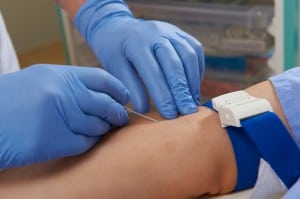
The result from this analysis indicated that most patients visiting the emergency department are not knowledgeable about their options related to vascular access device placement” Obadeyi et al (2019). Abstract: BACKGROUND: Vascular access device placement is one of the most routinely performed procedures in the emergency department. Despite its high usage, most patients have limited […]
Malposition of intraosseous needles in pediatric patients
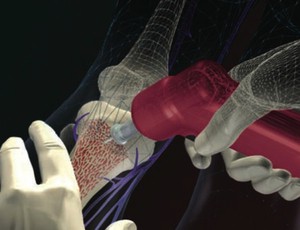
Aim of the study was to describe the rates of malposition of intraosseous needles (ION) in pediatric cadavers via post-mortem computed tomography (PMCT)” Maxien et al (2019). Abstract: AIM OF THE STUDY: Intraosseous vascular access is a commonly conducted procedure especially in pediatric resuscitation. Very high success rates for intraosseous (IO) devices are reported. Aim […]
Insulin adsorption capacity within infusion tubing

Insulin adsorption to clinical materials has been well observed, but not well quantified. Insulin adsorption reduces expected and actual insulin delivery and is unaccounted for in insulin therapy or glycemic control” Knopp et al (2019). Abstract: BACKGROUND: Insulin adsorption to clinical materials has been well observed, but not well quantified. Insulin adsorption reduces expected and […]
Vascular endothelium damage from catheter-induced mechanical stimulation

We investigated the effect of catheter-induced mechanical stimulation on venous endothelial cells and catheter sleeve formation and the efficacy of anti-thrombogenic technology for preventing catheter sleeve formation in vivo” Tanabe et al (2019). Abstract: BACKGROUND: Intravenous catheters are widely used but are often removed due to complications associated with catheter sleeve formation. A catheter sleeve […]
PICC flow dynamics examined

This study examined the maximum flow rate and infusion pressure of various peripherally and centrally inserted intravenous catheters using a rapid infusion system (ThermaCor 1200 Rapid Infusion System, Smisson-Cartledge Biomedical)” Wrenn et al (2017). Abstract: The inability to rapidly administer warm intravenous fluids and blood products can potentially threaten a patient’s safety and well-being in […]
Qualitative study of parents’ experiences of paediatric OPAT

To better understand the factors that facilitate and hinder a positive experience of paediatric outpatient parenteral antimicrobial therapy (OPAT)” Carter et al (2019). Abstract: OBJECTIVE: To better understand the factors that facilitate and hinder a positive experience of paediatric outpatient parenteral antimicrobial therapy (OPAT). DESIGN: Qualitative study using semistructured interviews. SETTING: A dedicated paediatric consultant-led […]
National intervention to prevent central line-associated bloodstream infection

In hospitals with a disproportionate burden of health care-associated infection, a multimodal intervention did not reduce rates of CLABSI” Patel et al (2019). Abstract: BACKGROUND: Central line-associated bloodstream infection (CLABSI) remains prevalent in hospitals in the United States. OBJECTIVE: To evaluate the impact of a multimodal intervention in hospitals with elevated rates of health care-associated […]
Current state of vascular access in Singapore

This article described the current state of vascular access management for patients with end-stage renal disease in Singapore” Pang et al (2019). Abstract: This article described the current state of vascular access management for patients with end-stage renal disease in Singapore. Over the past 10 years, there has been a change in the demographics of end-stage […]
Impact of vascular access outcome in patients at high bleeding risk

We aimed to assess the impact of vascular access site on bleeding complications after percutaneous coronary interventions for HBR patients at 30-day and 2-year follow-up” Jiménez Díaz et al (2019). Abstract: INTRODUCTION AND OBJECTIVES: The prognostic impact of bleeding in high bleeding risk (HBR) patients depending on the location of bleeding and prognosis in nonaccess […]
Hemodynamics involved in ischemic steal syndrome of AV access
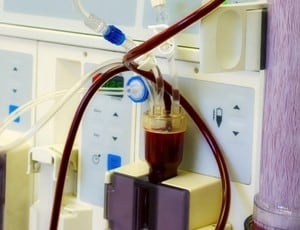
The arteriovenous fistula is the preferred access but remains susceptible to complications, among which ischemic steal syndrome is the most serious” Hong (2019). Abstract: Long-term hemodialysis, the main treatment modality for patients with end-stage renal disease, requires reliable vascular access. The arteriovenous fistula is the preferred access but remains susceptible to complications, among which ischemic […]
Effectiveness of an IV protection device in pediatric patients

The study aimed to examine the efficacy of the I.V. House® UltraDressing® for protecting peripheral intravenous catheters (PIVCs) in pediatric patients” Büyükyılmaz et al (2019). Abstract: PURPOSE: The study aimed to examine the efficacy of the I.V. House® UltraDressing® for protecting peripheral intravenous catheters (PIVCs) in pediatric patients. METHODS: This randomized controlled trial comprised 60 […]
Safety of midline catheters for intravenous therapy

The purpose of this study is to evaluate the safety of MCs for extended intravenous use” Seo et al (2019). Abstract: Background: Midline catheters (MCs) have arisen as alternatives to peripherally inserted central catheters (PICCs) for both general intravenous therapy and extended outpatient parenteral therapy. However, there is a lack of data concerning the safety […]
CLABSI in pediatric home parenteral nutrition patients

To describe antimicrobial resistance patterns and determine the most appropriate empiric antibiotic therapy in HPN dependent children experiencing a community-acquired CLABSI” Raphael et al (2019). Abstract: BACKGROUND: Patients receiving home parenteral nutrition (HPN) are at high-risk for central line associated bloodstream infections (CLABSI). However, there are no published management guidelines for the antibiotic treatment of […]
Successful insertion of PICC in a patient with persistent left superior vena cava
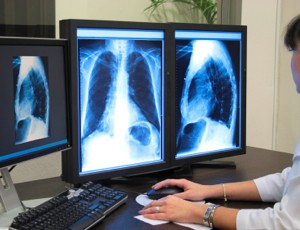
After obtaining written informed consent, we present a case where two successful insertions of PICC were performed in a 50-year-old female patient with PLSVC and right SVC” Kang et al (2019). Abstract: RATIONALE: Peripherally inserted central catheters (PICC), normally located at the lower 1/3rd of the superior vena cava (SVC) and cavo-atrial junction, are commonly […]
Distal ulnar approach in the palmar artery for coronary angiography

The study was aimed at proving the preliminary feasibility, safety, and reliability of the right distal ulnar palmar approach in 15 consecutive patients” Valsecchi et al (2019). Abstract: Background: Transradial and translunar approaches, associated with fewer bleeding and vascular complications than transfemoral access, have been adopted and increasingly utilized following a “radial-first strategy.” Approaches that […]
Tiered approach for preventing central line-associated bloodstream infection

Because applying all of the evidence en masse (especially in hospitals struggling with high rates of HAI, such as CLABSI) was unlikely to be successful, we used lessons learned from a successful Veterans Affairs collaborative to create a tiered, or stepped, approach to prevent CLABSI” Patel et al (2019). Extract: Because applying all of the […]
Pulmonary artery embolization of implantable port catheter fragment

Broken catheter embolism is a rare but often fatal complication of implantable venous access devices” Tandon et al (2019). Abstract: Broken catheter embolism is a rare but often fatal complication of implantable venous access devices. Prompt removal is key to avoiding an adverse outcome. You may also be interested in… [rp4wp] Reference: Tandon, S., Livingston. […]
Risk of major complications after peripheral IV norepinephrine infusion

In the current database analysis, no significant association was found between the use of peripheral intravenous norepinephrine infusions and adverse events” Pancaro et al (2019). Abstract: BACKGROUND: Continuous infusions of norepinephrine to treat perioperative hypotension are typically administered through a central venous line rather than a peripheral venous catheter to avoid the risk of localized […]
Treatment of central venous perforation from central venous catheter

The present study reports on a case of a 64-year-old female who developed massive hemothorax and hemorrhagic shock after long-term dialysis due to central venous perforation during placement of the central venous catheter” Zhou et al (2019). Abstract: Central venous catheter is one of the most commonly used vascular therapies in patients receiving hemodialysis and […]
Using tablet-type ultrasonography to assess peripheral veins for IV catheterization
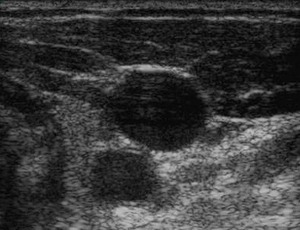
This cross-sectional study aimed to verify the reliability and validity of a tablet-type device in assessing vein size and depth for catheter site selection and detecting thrombus with resultant subcutaneous edema as a cause of catheter failure using US” Takahashi et al (2019). Abstract: Purpose: In clinical settings, ultrasonography (US) has recently been used to […]
Modification of blood test draw order to reduce blood culture contamination

This study was designed to test whether diversion of blood obtained at venipuncture into a lithium-heparin tube prior to aspiration of blood culture reduces contamination” Zimmerman et al (2019). Abstract: BACKGROUND: Blood culture contamination leads to unnecessary interventions and costs. It may be caused by bacteria in deep skin structures unsusceptible to surface decontamination. This […]

